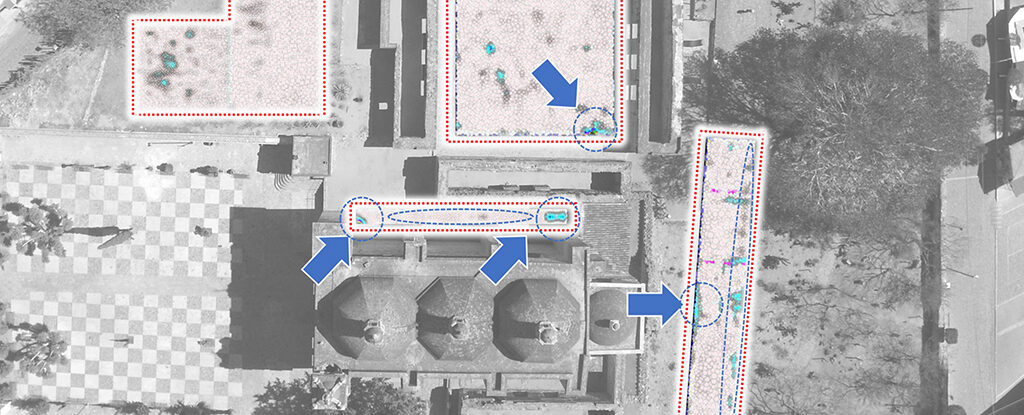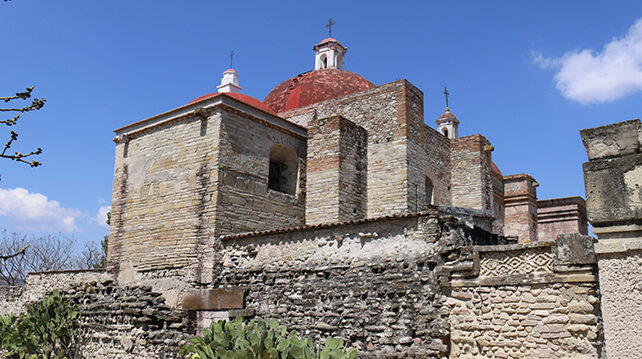
© Project LyobaaA variety of imaging techniques were used to spot underground spaces.
Archaeologists working at the
Mitla site in southern Mexico have come across a discovery worthy of an Indiana Jones movie: a labyrinth of chambers and passageways hidden below a church, representing an 'entrance' to the underworld.
When the buildings were put up by the ancient Zapotecs more than 1,000 years ago, they would've been used as a religious temple and known as the Lyobaa - the 'place of rest'. Several tombs appear to be part of the underground network, which sits some 5-8 meters (16-26 feet) below the surface.To find the underground structures, researchers used three scanning methods to reveal what was hidden from view:
ground-penetrating radar (measuring electromagnetic wave reflections),
electrical resistivity tomography (measuring the progress of electric currents), and
seismic noise tomography (measuring the progress of seismic waves).

© Project LyobaaA church now sits on the site.
Combining the data from these techniques, the team produced a comprehensive map of
what lies below ground. Today, there's a church on the site, built after missionaries arrived in the area;
the altar of the church conceals the entrance to the underground network that's now been mapped.
It was the missionaries who documented and sealed off the Lyobaa. Writings from 1674 by Dominican father Francisco de Burgoa describe an underground temple in the spot, including four sprawling, interconnected chambers and multiple caverns and alleys deep below ground.
Now, it seems this place of rest has been found again.
The Zapotecs were strong believers in the underworld, worshipped multiple gods, and emphasized rituals - including when someone died.
The temple would've been in use until the late 15th century, it's thought, at which point the Aztecs and then the Spanish would've taken charge of the region. Thanks to the latest 3D imaging techniques, the network can be revealed again.
This is just the first season of
Project Lyobaa, with further scans and studies in the area planned for the years ahead. The team behind it comprises 15 multidisciplinary researchers, from archaeologists to engineers.
The researchers also found more evidence of a structure known as the
Palace of the Columns, the most significant ancient monument in the area. The discovery of an earlier construction stage will help in putting together the history of the Zapotec people.
This research and analysis aren't just about spotting ancient monuments either - it's also about assessing the
seismic and geological risk to these monuments so that experts can ensure they're preserved for future generations to study and maintain our links to thousands of years of human history.
In this case, probably both.
Meaning, the mentioned archeologists actually believe in the mainstream history narrative.